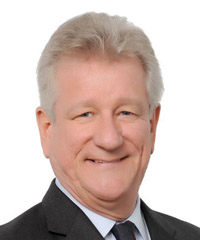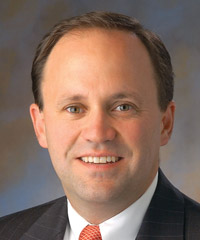Special Report: Singapore Aerospace
SINGAPORE’S AEROSPACE BUZZ
An industry friendly government, an airport complex of global reputation, inventive airlines that prowl relentlessly for market share and a superior aerospace trained work force have made the lion city a magnet for global and regional aerospace industries.
February 1st 2014
From aircraft manufacturers to engine makers and MRO providers, Singapore has sought and won their industry loyalty despite stiff competition from its equally motivated neighbours across the region. Read More »
 |
| Singapore’s strengths ... * Establishment of Seletar Aerospace Park * More than 120 aerospace companies * 10% average annual growth rate in the aerospace sector * More than 20,000 aerospace employees * More than 6,300 new direct aerospace employees by 2015 * Largest MRO hub in the Asia-Pacific * Third largest global air show showcases local industry * Award winning international airport complex * Home grown airlines that are early technology adopters |
Said Rolls-Royce regional director for ASEAN and the Pacific, Jonathan Asherson: “We invest our very complex and high value activity in places that recognize this activity is long-term and is high value-added.
“So where we have that choice, we select areas where we do get government support, from their technical structure to their technical education training programs and direct funding. These criteria all apply to Singapore.”
The U.S.’s Pratt & Whitney feels the same. Bordering its existing flagship Seletar facility, Pratt & Whitney Singapore Component Repair, the U.S. engine-maker broke ground in 2013 on a plant that will manufacture fan blades and high pressure turbine disks for Pratt & Whitney’s engines, the first such facility to be built outside the U.S. It will roll out fan blades from next year and turbine disks in 2016.
The head of Pratt & Whitney operations in Asia-Pacific, William Kircher, vice president, Singapore Overhaul & Repair, and president, UTC Aerospace Singapore, told Orient Aviation the company has had a partnership with Singapore for more than 20 years. It has six MRO sites - one for engine overhaul and five MRO part repair centres.
“We have grown there for multiple reasons,” Kircher said. “Firstly, the infrastructure on a number of levels is pro aerospace. You have a flagship airline in SIA that’s part of the infrastructure which has helped us build our business. We also have world class logistics and a world class educational platform from the engineering schools to the polytechnics to the trade schools. We have a great infrastructure to produce talent, great IT protection and a transparent financial system.
“The Economic Development Board (EDB) is where it starts, but Singapore is multi-layered. The EDB are there at the start and are with you for the remainder of the journey. But the Workforce Development Agency and other agencies in Singapore also support you.”
“We absolutely agree the potential in the region is phenomenal. The Asia-Pacific region, regardless of who presents the stats, is going to grow. There will be close to to 13,000 new planes, valued at US$2 trillion, in the region in the next 20 years. This is why we are so excited to have our regional headquarters in Singapore to take on this growing market.”
 |
| 'The business approach of the Singapore government and its agencies are a model for the rest of the world' |
| Jonathan Asherson Regional Director ASEAN and the Pacific Rolls-Royce |
Rolls-Royce’s $740 million engine manufacturing and test facility, as well as a unit making fan blades, is now well established at Seletar Aerospace Park (SAP). The huge facility accounts for around 15% of the aerospace sector’s contribution to Singapore’s GDP. It is on track to meet its annual target of 250 big engines per year by 2016, which will represent about half the company’s output for its airline clients.
“We had an enormous amount of support from the local authorities. The Singapore Government and its various agencies are a model for the rest of the world. Their approach and attitude to solving problems is a key differentiator,” said Asherton.
Already producing Trent 900 engines for A380s, 2014 will bring the manufacture of the Rolls-Royce Trent 1000 engine, which powers B787s and the upcoming A350XWB.
“This is both the largest market for aerospace and it’s the fastest growing. We can, as a company, predict fairly far into the future. So we have to keep planning for expansion. An example is our fan blade facility, which was designed for 6,000 blades a year (approximately matching the capacity to produce 250 engines).
“Since we went into production, we already have committed to expanding the facility internally.
It does not involve footprint expansion, but it does mean equipment expansion – to 7,600 blades a year purely because of the demand. So we are absolutely looking at future-proofing both physically and in the planning.”
Singapore has attracted more than 120 local and global aerospace companies to its shores and SAP has become the jewel in its crown. With the country’s aerospace industry growing at an annual average rate of 10% in the last two decades, the number of people employed by aerospace manufacturing, MRO, testing, training and research and development has grown to 20,000 and that does not include airline, airport and ATM staff.
Today, Singapore is the most comprehensive MRO hub in the region, attracting more than 25% - US$6.9 billion in 2012 - of the region’s MRO output. According to Singapore’s Ministry of Trade and Industry (MTI), the expanding industry is expected to need more than 6,300 new direct employees by next year.
Manufacturing remains a relatively small but growing part of Singapore’s aerospace output and for now is eclipsed by MRO, in which home grown firms lead the way. ST Aerospace, the world’s largest aviation maintenance provider, has grown into a full service aviation global facility operating on a wide range of commercial and military aircraft. With a staff of more than 8,000 worldwide, with 4,600 of them based in Singapore, ST Aerospace employs around 25% of the local workforce.
 |
| 'We absolutely agree the potential in the region is phenomenal. The Asia-Pacific region, regardless of who presents the stats, is going to grow ' |
| William Kircher Head of Pratt & Whitney operations in Asia-Pacific and vice president, Singapore Overhaul & Repair, and president, UTC Aerospace Singapore |
Singapore Airlines’ MRO division, SIA Engineering Company (SIAEC), services more than 80 international airlines and offers fleet management to more than 200 aircraft at 10 airlines. With 15 joint ventures in Singapore, SIAEC’s maintenance centre has access to world class original equipment manufacturers’ (OEM) expertise and cutting-edge technologies. Two of their joint ventures, Eagle Services Asia and Singapore Aero Engine Services are regional centres of excellence for engine overhaul for Pratt & Whitney and Rolls-Royce.
As recently as November, Vector Aerospace Corporation, a global independent provider of aviation MRO services announced the establishment of a US$40 million engine facility that will be built at SAP to service the PW150A turboprop engine and the Bombardier Q400. The 8,000 square metre engine centre, housing a 5,200 square metre state-of-the-art facility, planned for full operation by year end, it represents Vector Aerospace’s appointment as a Pratt &Whitney Designated Overhaul Facility (DOF). The SAP complex will be equipped with full engine overhaul and test capability and employ up to 140 staff.
Declan O’Shea, Vector’s president and chief executive said. “In our overall business expansion plan, the Southeast Asian market is extremely important. We recognize the immense importance of this market and are taking these steps to expand our presence here with close proximity to our customers.”
Among other players is Boeing, with an Integrated Materials Management (IMM) regional centre, which manages the spare parts inventories of airlines. Embraer has chosen Singapore for its regional logistics and spares hub to provide spares and rotables support to regional airline customers.
Other well known players with facilities at SAP are Bombardier, Bell Helicopter, Cessna Aircraft, Fokker Services Asia and Hawker Pacific.
Part of the attraction of Singapore, according to international companies which have opened units there, is the readily available pool of skilled workers as well as world-class training facilities that are graduating increasing numbers of aerospace professionals.
Institutions such as the Singapore Aviation Academy, the Institute of Technical Education (ITE), the National University of Singapore, Nanyang Technological University and Singapore Institute of Technology, as well as companies such as SIA Engineering, have partnered with companies like Rolls-Royce and Pratt & Whitney to offer specialized courses for aerospace undergraduates.
The Singapore Workforce Development Agency (WDA) has courses for upgrading aerospace workers through a Workforce Skills Qualifications (WSQ) programme.
At Rolls-Royce’s SAP campus, there is a Regional Training Centre (RTC), the first such facility in Asia, which will benefit Asian carriers by giving their airline staffs a top-notch training facility in the region.
Also on the SAP campus is the Advanced Technology Centre (ATC), which develops technologies to support core business areas. Four key areas of research include materials support technology, computational engineering, electrical power and control systems and manufacturing technology research.
“We started a training facility here (at SAP) in partnership with the ITE on the one hand and SIA Engineering on the other. It was targeted at technical training so we are training our own people as we ramp up here in Singapore, but also providing customer training for civil aviation and marine and defence,” said Asherson.
Singapore show breaks record
Lau said the show attracts about 60 of the top 100 global aerospace companies, with their number increasing at each show. “They bring value. They bring opportunity for the government to tap these companies to base their operations in Singapore,” he said. A new feature at this year’s show will be a dedicated aviation training zone. “The growing demand for air travel creates demand for more pilots and technicians. This demand fuels expansion in the training and simulation market. So we decided to carve out a space dedicated to training,” said Lau. Singapore Air Show: February 11-16, 2014. Changi Exhibition Centre, Changi. |